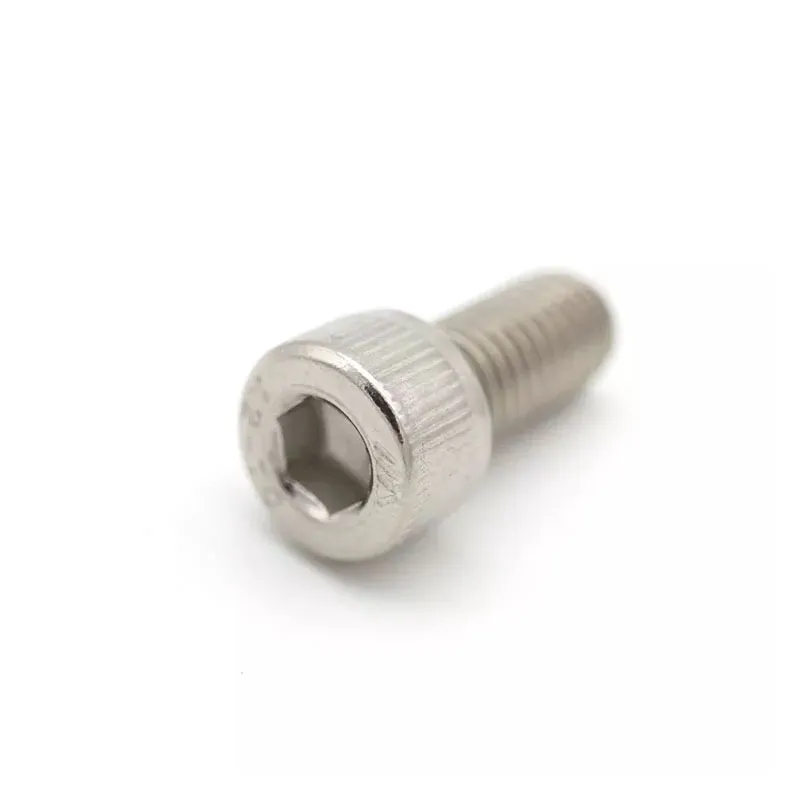

Understanding DIN 127B Spring Washers and Their Applications in Various Industries
Nov . 10, 2024 05:29 Back to list
Understanding DIN 127B Spring Washers and Their Applications in Various Industries
Understanding DIN 127B Spring Washers Essential Components for Mechanical Fastening
In the world of mechanical engineering and fasteners, the DIN 127B spring washer is an integral component designed to enhance the integrity and reliability of bolted joints. Understanding the functions, types, applications, and benefits of these washers is essential for engineers, manufacturers, and anyone involved in mechanical assembly.
What is a DIN 127B Spring Washer?
A DIN 127B spring washer is a specially designed component that works to absorb shock, reduce friction, and prevent the loosening of threaded fasteners such as bolts and screws. The DIN in its name stands for Deutsches Institut für Normung, which translates to the German Institute for Standardization. This organization establishes standards for various products, including fasteners, ensuring compatibility and quality across different applications.
The DIN 127B spring washer features a circular, split design that allows it to compress when tightened. This split creates a spring effect, allowing the washer to exert a constant force on the fastener, keeping it securely in place even under vibration, thermal expansion, and other mechanical stresses.
Key Features and Characteristics
1. Material Typically made from carbon steel, stainless steel, or other alloys, the choice of material can significantly impact the performance and durability of the washer. Stainless steel variants offer enhanced corrosion resistance, making them suitable for applications in harsh environments.
2. Diameter and Thickness DIN 127B spring washers come in various sizes, with specifications detailing inner and outer diameters and thickness. Selecting the appropriate size is crucial for ensuring the washer integrates seamlessly with the corresponding fastener.
3. Load Distribution The unique shape of the spring washer allows it to distribute the load evenly, which helps to minimize the risk of damage to the material being fastened. This property is particularly important in applications where the integrity of the assembly is paramount.
Applications of DIN 127B Spring Washers
din127b spring washer

DIN 127B spring washers find applications in a wide range of industries, including automotive, aerospace, machinery, and construction
. Some common uses include- Automotive Assembly Used in engine mounts and other critical components where vibration and movement are prevalent. - Aerospace Engineering Ensuring the reliability of fasteners in aircraft structures subject to extreme conditions. - Construction Employed in steel structures and heavy machinery to maintain joint integrity under dynamic loads.
Benefits of Using DIN 127B Spring Washers
1. Prevention of Loosening One of the primary benefits of these washers is their ability to prevent the loosening of fasteners over time, which is crucial for maintaining safety and functionality in mechanical assemblies.
2. Vibration Resistance The inherent spring action of the washer absorbs shocks and vibrations, thereby minimizing the risk of failure due to fluctuating forces.
3. Ease of Installation DIN 127B spring washers are easy to install and fit around bolts and screws without extensive modifications, making them a convenient choice for assembly lines and manufacturing settings.
4. Cost-Effective Solution Given their durability and performance, DIN 127B spring washers are a cost-effective solution that reduces the need for frequent maintenance and replacement of fasteners.
Conclusion
In conclusion, DIN 127B spring washers play a vital role in ensuring the reliability and safety of various mechanical assemblies. Their unique design and functionality contribute significantly to the performance of bolted joints in different industries. Whether you are an engineer, a manufacturer, or someone working in mechanical assembly, understanding the importance of these washers will help you make informed decisions and improve the overall effectiveness of your projects. Adopting high-quality spring washers not only promotes better performance but also enhances the longevity of your mechanical systems.
Latest news
-
High-Strength Hot-Dip Galvanized Bolts-Hebei Longze|Corrosion Resistance&High Strength
NewsJul.30,2025
-
Hot Dip Galvanized Bolts-Hebei Longze|Corrosion Resistance&High Strength
NewsJul.30,2025
-
Hot Dip Galvanized Bolts - Hebei Longze | Corrosion Resistance, High Strength
NewsJul.30,2025
-
High-Strength Hot Dip Galvanized Bolts-Hebei Longze|Corrosion Resistance, Grade 8.8
NewsJul.30,2025
-
Hot Dip Galvanized Bolts-Hebei Longze|Corrosion Resistance,High Strength
NewsJul.29,2025
-
High-Strength Hot Dip Galvanized Bolts - Hebei Longze Metal Products Manufacturing Co., Ltd.|corrosion resistance&high strength
NewsJul.29,2025

